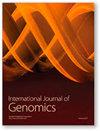肠杆菌科细菌对氟苯尼考的耐药性及耐氟苯尼考乳酸菌R25的全基因组序列分析
IF 2.6
4区 生物学
Q3 BIOCHEMISTRY & MOLECULAR BIOLOGY
引用次数: 9
摘要
由于使用不当,动物呼吸道和肠道细菌对氟苯尼考的耐药性日益严重。为了检测肠杆菌科细菌对氟苯尼考的耐药性机制,对292株动物粪便分离株进行了检测。采用琼脂稀释法测定对氟苯尼考的最小抑菌浓度(MIC),采用聚合酶链式反应(PCR)检测氟苯尼科耐药基因。为了进一步探讨氟苯尼考抗性的分子机制,对阿氏勒克莱尔R25进行了全基因组测序。在测试的菌株中,61.6%(180/292)对氟苯尼考具有耐药性,64.4%(188/292)的floR呈阳性,1.0%(3/292)的cfr呈阳性。阿氏乳杆菌R25的全基因组序列分析表明,floR基因由转座子携带并位于质粒(pLA-64)上。pLA-64上还编码了其他七个抗性基因,所有这些基因都与可移动的遗传元件有关。与pLA-64具有最大相似性的序列是弗氏柠檬酸杆菌的质粒p02085-tetA和均来自阴沟肠杆菌的p234和p388。与抗性基因相关的可移动遗传元件也共享来自不同种类或属的细菌的同源序列。这些发现表明,floR主要导致肠杆菌科中氟苯尼考的高耐药率。pLA-64编码的与抗性基因相关的可移动遗传元件可能在不同种属的细菌之间转移,导致抗性传播。本文章由计算机程序翻译,如有差异,请以英文原文为准。
Florfenicol Resistance in Enterobacteriaceae and Whole-Genome Sequence Analysis of Florfenicol-Resistant Leclercia adecarboxylata Strain R25
Due to inappropriate use, florfenicol resistance is becoming increasingly serious among animal respiratory tract and gut bacteria. To detect the florfenicol resistance mechanism among Enterobacteriaceae bacteria, 292 isolates from animal feces were examined. The agar dilution method was conducted to determine the minimum inhibitory concentration (MIC) for florfenicol, and polymerase chain reaction (PCR) was performed to detect florfenicol resistance genes. To further explore the molecular mechanism of florfenicol resistance, the whole-genome Leclercia adecarboxylata R25 was sequenced. Of the strains tested, 61.6% (180/292) were resistant to florfenicol, 64.4% (188/292) were positive for floR, and 1.0% (3/292) for cfr. The whole-genome sequence analysis of L. adecarboxylata R25 revealed that the floR gene is carried by a transposon and located on a plasmid (pLA-64). Seven other resistance genes are also encoded on pLA-64, all of which were found to be related to mobile genetic elements. The sequences sharing the greatest similarities to pLA-64 are the plasmids p02085-tetA of Citrobacter freundii and p234 and p388, both from Enterobacter cloacae. The resistance gene-related mobile genetic elements also share homologous sequences from different species or genera of bacteria. These findings indicate that floR mainly contributes to the high rate of florfenicol resistance among Enterobacteriaceae. The resistance gene-related mobile genetic elements encoded by pLA-64 may be transferred among bacteria of different species or genera, resulting in resistance dissemination.
求助全文
通过发布文献求助,成功后即可免费获取论文全文。
去求助
来源期刊

International Journal of Genomics
BIOCHEMISTRY & MOLECULAR BIOLOGY-BIOTECHNOLOGY & APPLIED MICROBIOLOGY
CiteScore
5.40
自引率
0.00%
发文量
33
审稿时长
17 weeks
期刊介绍:
International Journal of Genomics is a peer-reviewed, Open Access journal that publishes research articles as well as review articles in all areas of genome-scale analysis. Topics covered by the journal include, but are not limited to: bioinformatics, clinical genomics, disease genomics, epigenomics, evolutionary genomics, functional genomics, genome engineering, and synthetic genomics.
 求助内容:
求助内容: 应助结果提醒方式:
应助结果提醒方式:


